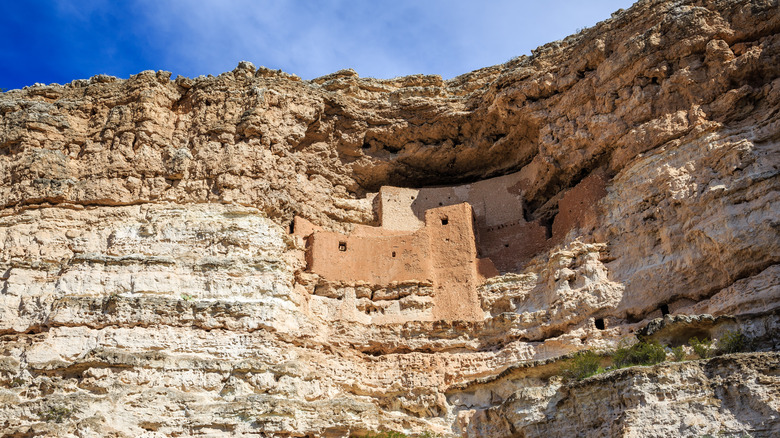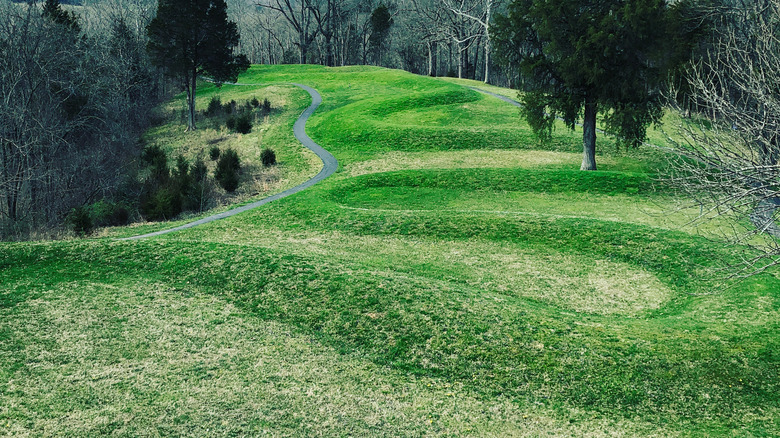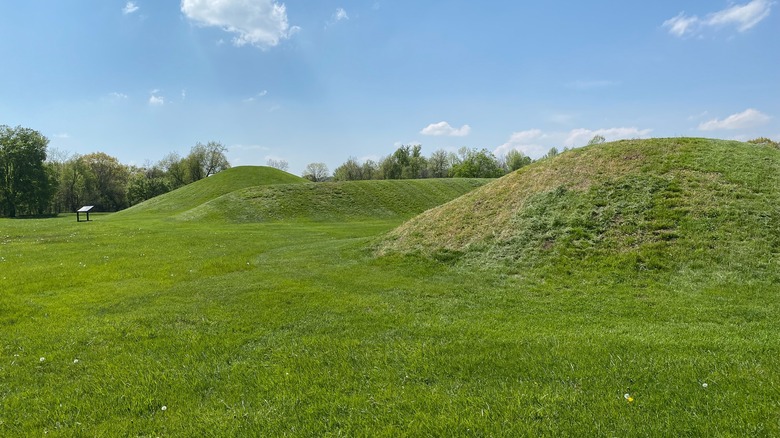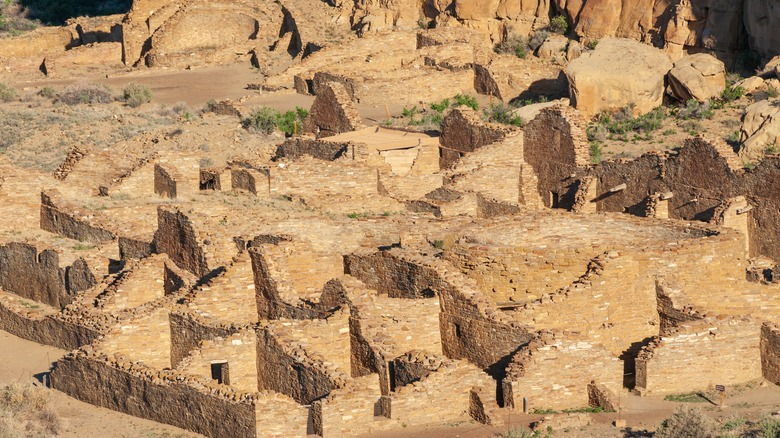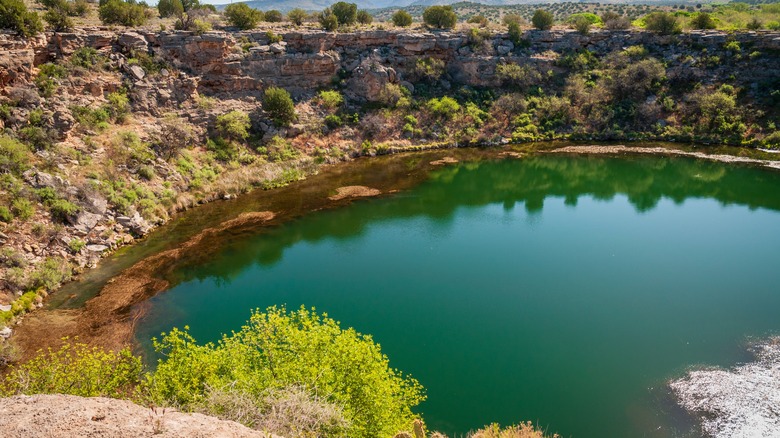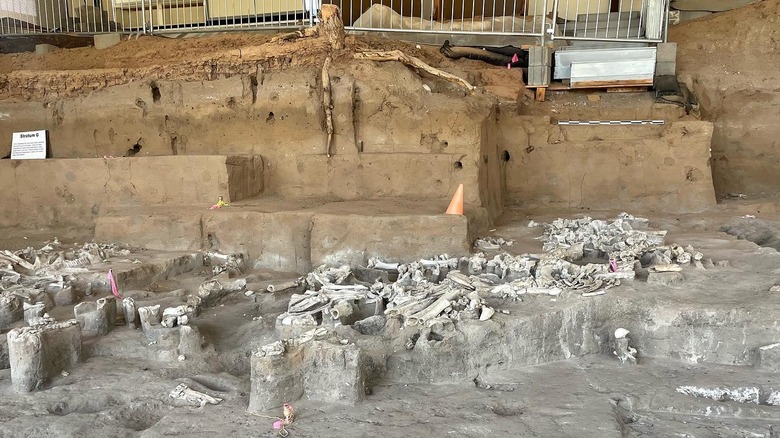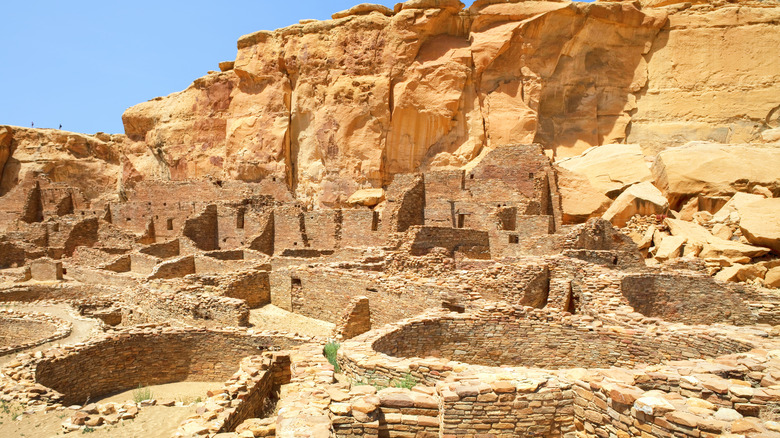These Are Some Of The Best Ancient Sites Within The United States
When we think of ancient sites around the world, images of the Great Pyramids of Giza, Stonehenge, and Aztec temples come to mind. We tend to think of the United States as being a young country in comparison to the ancient histories in other countries throughout the world. The United States actually has a rich history from well before the first colonizers arrived on its pristine shores. While many incredible historical sites in America only date back a few hundred years, Indigenous Americans occupied the land for thousands of years before a European ever set foot on the North American continent.
As you venture around the United States, you'll be able to visit some of these incredible ancient sites that are scattered around the expansive nation. Often underrated and off the beaten path, visiting ancient sites within the United States is a powerful experience that brings a deep appreciation for the country's natural beauty and the people who lived there.
From the lush green forests of the Midwest to the rugged deserts of the Wild West, the United States is full of unique archaeological sites, some of which are remarkably well-preserved. Whether you're a local looking to learn more about your country's pre-colonial history or you're an international visitor hoping to experience the heart and soul of America and its earliest inhabitants — visiting these ancient sites offers an eye-opening and inspiring experience. We chose our list of the best ancient sites based on historic value, age, and the condition of the ruins themselves.
The Great Serpent Mound
Located in Adams County in Ohio, The Great Serpent Mound is unlike anything else in the United States. The giant effigy is constructed using rocks and mounds of dirt to create a massive snake with a spiral tail that is situated close to the site of a large meteor strike from millions of years ago. The mound runs over 1,300 feet in length — nearly a quarter mile — and sits within a beautiful 60-acre park. At its highest point, the snake is around 4 feet tall, and it is about 20 feet wide.
It dates back over 2,000 years. According to scholars, it was initially constructed around the year 300 B.C., making it the oldest surviving effigy mound in the world. Data on exact dates of construction are inconclusive, and archeologists believe more research is needed.
It was initially discovered in the 1800s, and despite multiple excavations, the sight remains mysterious. Some experts believe that the oval near the mouth of the snake is an egg representing fertility. Others see it as a symbol of the sun being swallowed, potentially representing an eclipse. Researchers believe the serpent holds an astronomical significance and served as a spiritual gathering place.
Now, visitors can explore the site for a parking fee of $8. Throughout the year, spiritual and cultural events still take place at the site that are open to the public. Hours vary throughout the year, so check the Ohio History Connection website for more information.
Hopewell Ceremonial Earthworks
The Hopewell Ceremonial Earthworks are also located in Ohio, scattered around the southern region of the state. They were constructed a few hundred years after the Great Serpent Mound Effigy. Collectively, they have recently been named the newest UNESCO World Heritage Site. The earthworks consist of multiple mounds and other structures created from dirt and stone, most of which are located along the Ohio River's tributaries. The mounds help tell the stories of some of the first Indigenous people in North America, and archeologists believe they were constructed around 1,600 to 2,000 years ago. There are eight different points of interest that make up the UNESCO World Heritage Site, and driving between all of them takes around three hours.
Incredible artifacts have been discovered throughout the sites, giving visitors a glimpse of how these early people lived. Fascinatingly, some objects seem to indicate trade with other cultures from as far away as Yellowstone and Florida. The various mounds and other earthworks likely served as gathering places for special ceremonies, and many align with certain astronomical occurrences like the phases of the moon.
The various sites are located in some of the most beautiful natural settings in Ohio. Close by, you'll find picturesque rivers perfect for kayaking and canoeing, old-growth deciduous forests, and opportunities for recreation like hiking or bicycling along the Little Miami Scenic Trail. The sites are free to visit and open to the public from dawn until dusk throughout the year.
Chaco Culture National Historical Park
Chaco Culture National Historical Park is another one of the precious few UNESCO World Heritage Sites located within the United States and offers incredible views of star-lit skies. It's one of the least visited historical parks in the country, despite being full of opportunities to wander back in time and experience what life might have been like for early Indigenous people.
The site is a massive complex of ruins, some over 2,000 years old in New Mexico that once served as an important hub for trade and a spiritual gathering place for the ancestral Pueblo people. Their culture thrived for hundreds of years, and the structures and artifacts from the site indicate a complex society centered around spirituality and community. The architectural styles and masonry used in the building process were advanced. The Great Houses are particularly fascinating and were built to correspond with the sun, moon, and the four directions. Some have hundreds of rooms.
The ancient pueblo is located about 160 miles outside of Albuquerque. Part of the reason this site remains such a hidden gem is due to its remote location. The only way to get there is to travel the 9-mile loop road that connects the sites, which all open at 7 a.m. Nestled within a beautiful rugged landscape, the area is incredibly sacred to today's Indigenous people. If you choose to visit, make sure you treat the site, the surrounding land, and the Indigenous communities with your utmost respect and reverence.
Montezuma Castle
In the Western United States, many ancient Indigenous tribes created breathtaking homes in overhangs within the sandstone cliffs. These structures remained remarkably well preserved, and you can visit some of them across the United States. Montezuma Castle is one of the best, and it's located in Arizona, under an hour from the luxurious destination of Sedona. For many years, visitors could climb up into the dwelling and explore using massive wooden ladders. You can no longer enter the dwellings, but viewing them from below is equally impressive.
Montezuma Castle is massive and has 20 rooms across its five stories and is nestled within a cliff overhang about 100 feet above the ground. It's entirely crafted from carved limestone. Indigenous Sinagua people constructed the site around the year 1100 A.D. Nearby, you can visit Montezuma Well, which is a giant limestone sinkhole that is somewhat similar to Mexico's cenotes. The hole is filled with 15 million gallons of water and is surrounded by vegetation, providing an oasis in the harsh desert landscape for flora and fauna. Archeological evidence discovered around the site indicates that humans inhabited the area as far back as 9,000 years ago. More cliff dwellings surround the well, and it was believed to be used for irrigation by the people who lived there. Many modern-day Indigenous people consider the site to be sacred, so treat it with honor and respect when you visit.
Blackwater Draw New Mexico
Blackwater Draw isn't exactly a place where you will find ancient ruins in the form of dwellings, but it remains one of the most important archeological sites in the United States. Evidence of humans inhabiting the area dates back 12,000 years, making it the most ancient spot on our list by a long shot. Blackwater Draw is located on the site of a spring and lake from the Pleistocene period that runs through eastern New Mexico. The area is believed to have attracted animals towards the end of the Ice Age, and some of the earliest humans, now referred to as the Clovis people hunted them there. The site helped scientists prove that humans hunted Mammoths.
These early people were believed to have crossed into America from Siberia via the Bering Strait, which was frozen over from the Ice Age. They were nomadic hunters. You can explore the site and the Blackwater Draw Museum nearby, which has incredible artifacts like arrowheads that were used to hunt Clovis' massive prey. The museum has fascinating artifacts and costs just $3 per adult to visit. It is open from 9 a.m. until 5 p.m. on Thursday through Saturday, but it closes for one hour from noon until 1 p.m. daily. Sunday hours are from noon to 5 p.m.
Methodology
We selected the best ancient ruins to visit in the United States based on several factors, including points of interest, preservation status, accessibility, and overall condition. We only selected sites with archeological evidence dating back 1,000 years or more.
